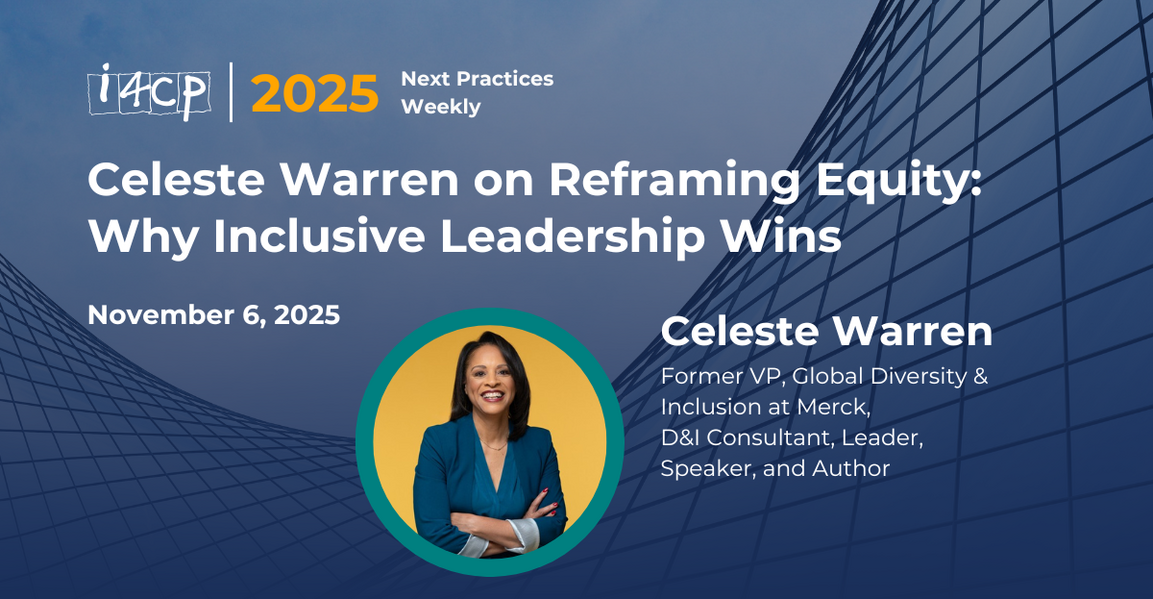Daiichi Sankyo's Employee Work-Life Harmony 10/27
October 27, 2022
October 27, 2022
The Getting Hybrid Work Right call series has become a well-attended and wide-ranging discussion for HR leaders on all aspects of hybrid work. On this week's call, i4cp' s CEO Kevin Oakes and Senior Research Analyst Tom Stone facilitated a conversation with special guests MaryBeth Forte, Executive Director, Total Well-Being and Lauren Mutz, Director of Employee Experience and Engagement at Daiichi Sankyo, a global pharmaceutical company headquartered in Japan. Here are some highlights from the call:
- Like many organizations, prior the pandemic, Daiichi Sankyo had a traditional, limited approach to flexible work arrangements and remote/hybrid work. Approval to work from home generally involved paperwork, approvals, etc.
- However, in the months leading up the pandemic, because of their business success, the company was running out of workspace in their offices. So they started using hoteling as an approach to office space and flexible work, and used the early pandemic time period as a pilot for remote work at scale.
- They called their return to office approach Flex and Connect, to emphasize the importance of intentional connection. The average of in-office time now is only 1-4 days per month in the office, so there is a lot of remote work at the organization.
- The emphasis is no longer to have one person on-site per department or team to "have coverage," but rather to be intentional about being in the office together when it makes sense to do so. It is more common to have an entire team in the office at once to collaborate for a day or few days, rather than just one or two people from a group at a time.
- Daichii Sankyo in April 2021 kicked off an initiative to listen to their employees in order to improve their work-life in a variety of ways. The resulting program was named WeTHRIVE, and was focused on improving how employees collaborate, reducing stress at work, and so on.
- They used a design thinking approach which involved one initial survey as a spark, two sessions (3.5 hours) of input and brainstorming, and 24 cross-business participants. The result of this effort was 90+ rapidly brainstormed ideas, and countless stories about the root causes and future considerations to validate and evolve their starting point.
- Throughout 2021, several actions were taken, including:
- Introduced Flex+Connect, (joint deliverable with WeTHRIVE) enhancing virtual collaboration
- Shorter Outlook meetings (25/50 minutes) to give breaks
- Renewed commitment to Focused Fridays and Summer Hours
- Offered Field employees a July 4th holiday “Focused Week”
- Targeted resources, tools and videos on the WeTHRIVE site like “3 Tips for Highly Effective Meetings”
- 9 Leadership Workshops for “New ways of working” 95% success rate
- 11 Reset Your Work Experience Workshops for preparing leaders to support their teams. 89% Success Rate
- Removed core hours and no need for “full day” in the office
- These changes and actions were all helpful, but they didn't always shift behavior fully--they didn't always lead to new habits that stuck.
- So from late 2021 and throughout 2022 and into 2023 they have had leader-led campaigns that focus on key areas such as work boundaries, effective meeting strategies, sustaining energy, etc.
- Senior leadership was very receptive to this program and the changes included. Business is going well, so leaders saw the importance of focusing on these important culture and workstream changes, instead of only focusing on the day-to-day urgent matters as is so common in business. They needed to do this work, because their business is only going to keep growing and getting busier.
- During the call, we ask the following two participant polls:
- "As part of your employee listening strategy, how often do you seek employee input?"
- 42% Once or twice a year
- 32% Quarterly
- 8% Once a month
- 2% Weekly
- 16% We take an “always on” approach to employee listening
- When surveying employees…
- 11% We only ask Likert / multiple choice questions; we don’t have write-in comments
- 62% We review and analyze write-in comments manually
- 5% We get write-in comments, but we don’t do much with them
- 23% We review and analyze write-in comments using technology
(NLP / Artificial Intelligence)
- "As part of your employee listening strategy, how often do you seek employee input?"
Links to resources shared on the call:
- Upcoming i4cp virtual events
- 2023 i4cp Next Practices Now Conference -- May 27-30, 2023, in Scottsdale, Arizona (and virtual). Now open for registration!
- i4cp report: Next Practices in Holistic Well-Being




